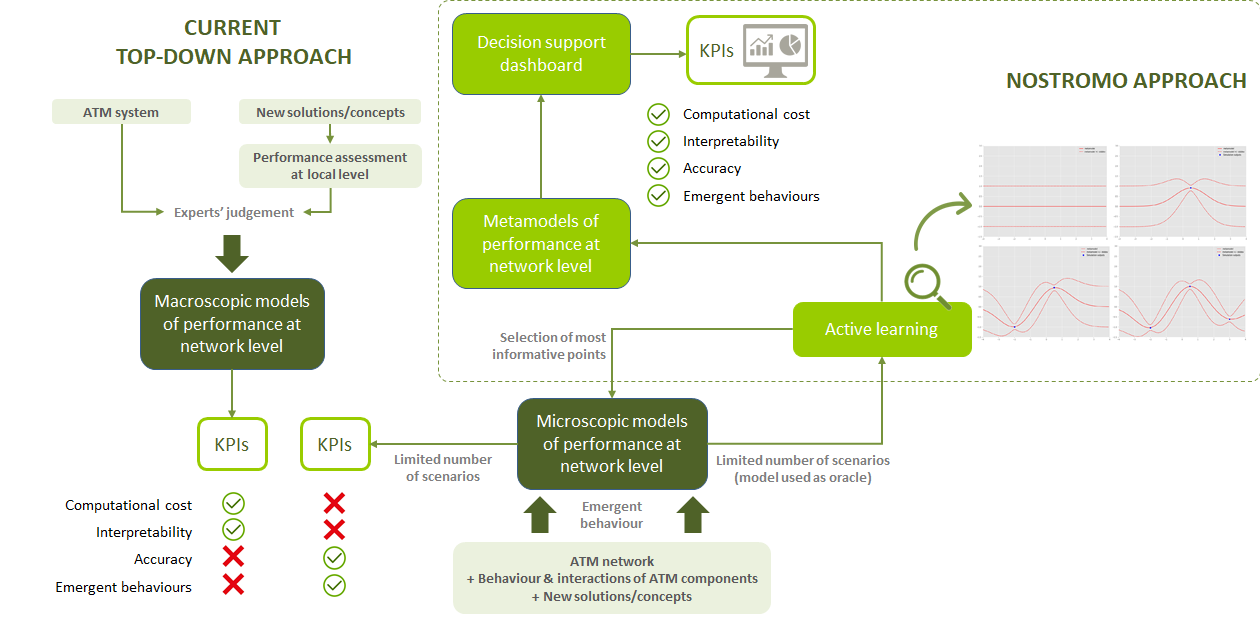NOSTROMO Overview
.
· Top-down macroscopic models:
Macroscopic models, such as the influence diagrams are the most commonly used for strategic decision-making because of their parsimonious character, which renders them easy to compute and facilitates the task of explaining and communicating results to decision makers. However, they suffer from two major shortcomings. First, they avoid the explicit modelling of the complex interrelationships between the components of the ATM system, which prevents them from capturing the resulting emergent behaviour and network effects. Second, they are, to a large extent, based on the use of experience and expert judgement; given the impossibility of conducting validation experiments at a network-wide scale, their mathematical formulation is thus supported by little or no empirical evidence.
· Bottom-up microscopic models:
As opposed to the previous approach, ATM performance modelling has also been approached through the development of microscopic models with stronger behavioural foundations, which explicitly model the influence of new solutions on the behaviour and interactions of individual entities at the disaggregated level (e.g., individual flights) with the aim to observe the performance that emerges at the macroscopic level. Different models of this type, usually operationalised through fast time and agent-based simulations, have shown their ability to capture a rich variety of behaviours in a very realistic manner. However, these models also face some limitations that hinder their operational use: the richness of the model comes at the cost of computational complexity, which makes it difficult to explore the simulation space in a systematic manner, and also hampers the task of analysing, interpreting and communicating the modelling results.
The NOSTROMO project aims to tackle these limitations, in order to develop new approaches to ATM performance modelling able to reconcile model transparency, computational tractability and ease of use with the necessary sophistication required for a realistic representation of the ATM system. The next diagram shows NOSTROMO Aproach, which will take the benefits of cost and interpretability from Macroscopic models, and the advantages in accuracy and behaviours capturing from Microscopic models.

.
.